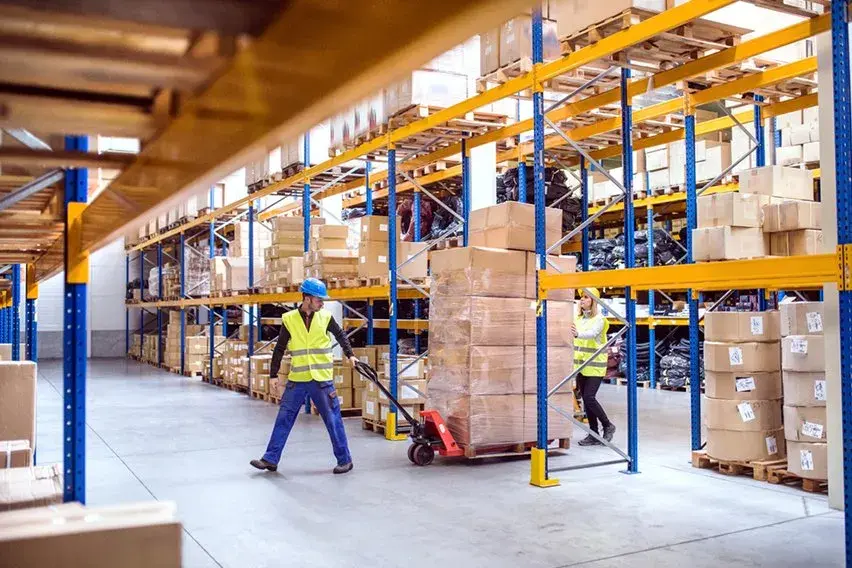Share Via
Download PDFHeadcount is always a struggle in retail. Case in point: my work includes network engineering for 16,000 retail stores, dozens of distribution centers across North America, a distributed enterprise network, the data center network, and conferencing and voice services — with only seven of us to manage it all.
Operating at this scale with such a small team requires choosing the right technology and networking vendor to make the mountain feel like a molehill.
Connectivity woes plagued the business
Warehousing and distribution centers are the lifeblood of our business. Much of our merchandise is seasonal, and if stores don’t have goods in time, those goods don’t sell. Unfortunately, these distribution centers used to be very inefficient due to poor coverage and connectivity.
For starters, we had WAN-level problems. Each distribution center was running a 1.5 Mbps MPLS connection that went down frequently. When a warehouse would go down, people couldn’t work. Aside from the business impact, it means people don’t get paid — so they can’t afford essential services, pay their rent on time, or put quality food on the table.
Cost challenges meant we’d underinvested in warehouse connectivity for years and missed out on new, more cost-effective technologies. We tried covering extremely large areas with too few access points. In one example, we attempted to cover a 600,000-square-foot distribution center with only 14 access points. It didn’t work, and our IT staff built processes around the patchy connectivity: people would be working in one area, stop and move to an area with good Wi-Fi, stand there to complete their task, then return to where they were previously working. Rinse and repeat.
The situation was unacceptable, and I saw it as an opportunity to radically transform our distribution center environment. I requested bids from different vendors, and we found some initial success by moving to an SD-WAN offering with high-speed internet for the WAN issues. We then upgraded the MPLS to 50 Mbps and got our distribution centers to under five minutes of downtime per year.
That was a huge improvement, but some of our applications required even less downtime, and the Wi-Fi problem still persisted. Our legacy solution was HPE Aruba, which was difficult to deploy and not easily scalable. While searching for a cloud-first alternative to fix our Wi-Fi issues and make managing the networks easier, I came across Nile.
Simple, swift deployments
The Nile Access Service is a Network as a Service (NaaS) offering that includes native campus zero trust security, advanced AI networking, and a unique performance guarantee. We found it much better suited to our needs than a traditional alternative. It could turn our impoverished environment into a network with modern network architecture, security, and management.
“Nile could turn our underinvested environment into a network with modern network architecture, security, and management.”
The cost structure also aligned with our goal of a minimal capital investment. The Nile Access Service presented an OpEx model with no upfront hardware purchases. We could reallocate that capital to refresh our entire cable plant and bring our distribution centers forward 15 years.
The ability to deploy quickly was another plus. Our distribution centers are so critical to our business that we couldn’t afford week-long closures for a Wi-Fi refresh. Nile’s singular architecture removed the need for a lot of decision-making and paved the way for a swift and smooth deployment. We went warehouse by warehouse, following the same process:
- Deploy the IDFs in the warehouse
- Deploy the aggregation layers in the server room
- Connect everything and begin routing with our core
- Activate the Wi-Fi network
- Migrate everything to Nile
When we first started deployments, the cutover process took about 10 hours. Now, it’s so streamlined that it only takes two.
Mandatory features increase security and stability
Improved security is an overarching theme for our upgrade. Nile’s features are built in, which I typically find receive better development attention and are higher quality as a result. Engineers rely on these features instead of manually tweaking countless settings — avoiding the risks and unintended consequences of over-customization.
Security is a great example. Every MAC address that plugs into the Nile Access Service must be authenticated. Because it’s mandatory (not optional, like with Aruba or Juniper), it automatically makes our network much more secure. Before, someone could easily walk into a distribution center and have unfettered access to our network. Because Nile requires every MAC address to be approved, we can identify what’s connected and from where and assert much more control over connectivity and the IT infrastructure without not being on site.
Increasing network awareness is a big deal for a small team, and Nile has been a big part of that. When something stops functioning on our network, we get an alert. Built-in AI features also help with monitoring and maintenance. Our Nile environment is much more resilient than our old one, and we’ve eliminated critical points of failure.
The Campus NaaS deployment was just the beginning. We adopted Nile’s secure guest PoP add-on through Nile Guest Service, and users will frequently check the MyNile user dashboard to check their network status, identify issues, and even locate a problem across our floor plan. I’m a big believer in self-service, and this feature has dramatically increased our scalability.
With Nile, we put people first
These benefits are great from a technical perspective, and we have a lower total cost of ownership (TCO) with Nile than our previous provider. The most significant impact, though, is on our people. Now, when warehouse employees show up to work, they can work without interruption.
Even if an issue arises, the disruption is minimal. Applications aren’t just on the local network anymore — they often rely on services we don’t own. We now have quantitative data on whether a hiccup is a networking issue at all. Not spending hours identifying a problem or chasing ghosts means we can address other issues faster. The data has been critical for us to gain some semblance of a work-life balance.
“We feel the most impact with our people. Now, when warehouse employees show up to work, they can work. Even if an issue arises, disruption is minimal.”
Some companies have as many as 10 people working on their distribution center network. We just have one — and instead of gardening and pulling out weeds in the Wi-Fi, that engineer can now focus on real engineering tasks, like supporting our new private 5G service in our truck yards. If we hadn’t adopted Nile, I don’t know that we would’ve been able to tackle that project.
Don’t miss a transformative opportunity
Winning isn’t the goal. Building is the goal. I’m proud of our ability to quickly evaluate and build this new technology at scale. Throughout it all, I’ve had a ton of support from Nile at all levels. Service has dramatically improved with the support of Nile’s excellent technicians, who are attentive to our needs. I hear similar feedback from the warehouse teams. Nile also quickly addresses my requests for new features.
“Nile is a powerful platform capable of transforming enterprises.”
Nile is a powerful platform capable of transforming enterprises. It’s technically superior in many ways to the incumbent vendors, but people miss out on the opportunity because Nile isn’t one of the incumbent vendors. The best way to overcome that fear is to try Nile. It doesn’t take much: just a couple of network engineers and a desire to go all in.




